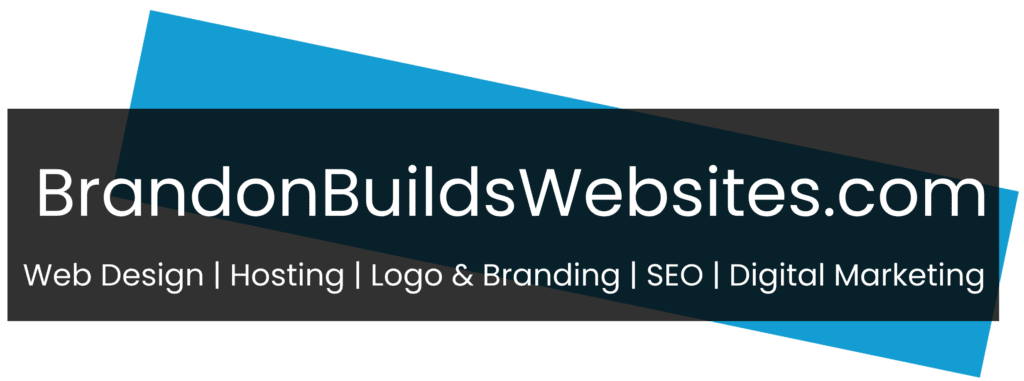
Understanding DIY Platforms: Pros and Cons
When it comes to building a website, DIY platforms like Wix, Shopify, and Squarespace have become highly popular options. These platforms have revolutionized the way individuals and small businesses approach web development, offering user-friendly interfaces and a plethora of templates that make website creation accessible to virtually anyone. Their ease of use is arguably their most compelling advantage. With intuitive drag-and-drop features and step-by-step guides, users can have a website up and running in a matter of hours, all without needing to know a single line of code.
Affordability is another key benefit. DIY platforms often come with various pricing tiers, allowing users to select a plan that suits their budget. This tiered structure can be particularly appealing to startups or personal projects, providing essential tools at a relatively low cost. Additionally, the quick setup process helps users go live almost immediately, which can be crucial for businesses keen on establishing an online presence without delay.
However, despite these advantages, DIY platforms have their drawbacks. One notable limitation is the restricted customization options. While templates offer a good starting point, they can be quite restrictive, preventing users from implementing unique design elements that reflect their brand’s identity. This can result in websites that, although professional-looking, may lack distinctiveness and fail to stand out in a crowded online space.
Hidden costs also present a significant challenge. While the basic plans are affordable, unlocking advanced features often requires upgrading to more expensive packages. These costs can add up, particularly for businesses that begin to scale and require more functionalities. Furthermore, some platforms may charge extra fees for third-party integrations, further inflating the total cost.
Design constraints represent another shortfall. Although the templates are professionally designed, they can sometimes be too rigid, limiting a website’s scalability and performance. This rigidity can hinder the ability to implement custom SEO strategies, potentially impacting Google rankings. For those aiming for ambitious, scalable web projects, these constraints may pose significant roadblocks.
In essence, while platforms like Wix, Shopify, and Squarespace offer accessible and affordable solutions for beginners and small businesses, they may fall short for those seeking a more professional and scalable web presence. The trade-offs between ease of use and customization, and between affordability and hidden costs, should be carefully considered to ensure the chosen platform aligns with long-term business goals.
The Hidden SEO Pitfalls of DIY Platforms
DIY platforms have become increasingly popular due to their ease of use and affordability. However, these platforms present significant challenges for effective Search Engine Optimization (SEO). One of the primary issues is the heavy reliance on generic templates. These templates, while visually appealing, often lack the depth required for optimal SEO performance. Generic templates tend to use standardized codes, which can slow down page loading speeds—a critical factor for Google rankings. Google’s algorithms favor faster-loading sites, and even a few extra seconds can negatively impact a site’s ranking.
Another common issue with DIY platforms is poor mobile responsiveness. While many DIY platforms claim to offer mobile-friendly designs, the execution often falls short. Poor mobile responsiveness not only frustrates users but also affects how search engines rank your site. With more than half of all web traffic coming from mobile devices, Google prioritizes mobile-optimized sites, making this an essential component of SEO.
The lack of advanced SEO features on DIY platforms further hampers a site’s potential to rank well. For instance, DIY platforms often provide limited abilities to optimize meta tags, headers, and structured data. These elements are crucial for search engines to understand the context and relevance of your content. Additionally, many DIY platforms face issues with duplicate content, where similar content appears across multiple pages. This can confuse search engines and result in lower rankings.
Technical SEO plays a substantial role in enhancing a site’s performance in organic search results. Unfortunately, DIY platforms often fall short in providing the necessary tools and features to address these technical elements. From optimizing site architecture and internal linking to managing crawl errors and implementing canonical tags, the complexities of technical SEO require more sophisticated solutions than what most DIY platforms can offer. Consequently, the limitations of DIY platforms lead to subpar site performance in organic search results, emphasizing the need for professional web design services to truly optimize SEO efforts.
Advantages of Custom Web Design for SEO
When considering the impact on SEO, the differences between custom web design and DIY platforms are profound. A professional web designer can address and rectify many of the SEO drawbacks inherently associated with DIY platforms. The bespoke nature of a custom-designed website allows for fully optimized coding, which plays a critical role in enhancing search engine rankings.
One of the primary benefits is the ability to achieve faster load times. Custom web design ensures that each element of your website is meticulously crafted to operate efficiently. Faster load times not only improve the user experience (UX) but are also favored by search engines, strengthening your site’s SEO performance. Enhanced UX significantly reduces the bounce rate, signaling to search engines that your content is relevant and valuable.
Furthermore, custom web design facilitates better implementation of SEO best practices. Keyword optimization becomes more precise and effective as professional web designers can seamlessly incorporate keywords without compromising the site’s readability or structure. Schema markup, which helps search engines understand the context of your content, can be intricately embedded into the website, improving the chances of appearing in rich snippets and other advanced search results features. Additionally, a custom approach allows for the strategic placement of high-quality internal and external links, which is essential for boosting domain authority and search rankings.
Custom designs are particularly advantageous because they can be tailored to meet the specific needs of your business. For instance, an e-commerce site may require robust product pages and a streamlined checkout process, while a service-based business might need effective lead capture forms and interactive elements. By customizing these aspects, you can ensure that your website not only meets your business objectives but also adheres to the latest SEO standards, thereby achieving higher organic search rankings.
Overall, the bespoke approach of a custom web design allows for a more controlled and effective SEO strategy, enabling your website to perform better in search engine results compared to those built on generic DIY platforms.
Case Studies: Real-World Success Stories
In this section, we will explore three compelling case studies of businesses that made the transition from DIY platforms to custom web design, emphasizing the significant improvements in SEO rankings and organic traffic. These examples provide valuable insights into the transformative power of custom-built websites.
Case Study 1: Local Bakery
A local bakery initially used a popular DIY website platform. However, the site faced slow page load times, high bounce rates, and poor keyword rankings. They decided to switch to a custom web design solution. Post-transition, the new website featured optimized images, faster load times, and an intuitive navigation structure.
Metrics showed a remarkable improvement: the page load time decreased from 3.5 seconds to 1.2 seconds, the bounce rate dropped by 47%, and they saw an increase in organic traffic by 65%. Keyword rankings also improved significantly, landing the bakery’s website on the first page of search results for most local search terms.
Case Study 2: E-commerce Store
An online clothing retailer experienced similar challenges on their DIY platform, including suboptimal mobile responsiveness and limited SEO capabilities. Transitioning to a custom-built site, they incorporated responsive design, enhanced metadata, and user-friendly URLs.
Post-migration, the site’s mobile performance improved considerably, with page load times on mobile devices dropping from 4.2 seconds to 1.8 seconds. Organic traffic increased by 80%, and the retailer noticed a 35% increase in sales conversions due to better user experience and higher visibility in search results.
Case Study 3: Professional Services Firm
A legal firm struggled with low visitor engagement on their DIY platform due to generic design templates and inadequate content structuring. By investing in a custom web design, they received a site that was tailored to their specific services and optimized for search engines with quality content and strategic keyword usage.
The new website achieved a 40% reduction in bounce rates and a 50% increase in the average session duration. Moreover, their keyword rankings for specific legal services improved drastically, leading to a 75% increase in organic search traffic.
Actionable Tips for Transitioning
For businesses considering a move from a DIY platform to a custom-built website, start by auditing your current site’s performance and identifying areas needing improvement. Partner with a reputable web designer to develop a site tailored to your business needs, with a focus on fast load times, responsive design, and SEO-friendly elements.
Investing in a high-quality, custom-built website may have higher upfront costs but offers substantial long-term benefits for your SEO and overall online presence. Ensuring your website is optimized for both search engines and user experience can significantly enhance your business’s digital footprint and drive sustainable growth.
